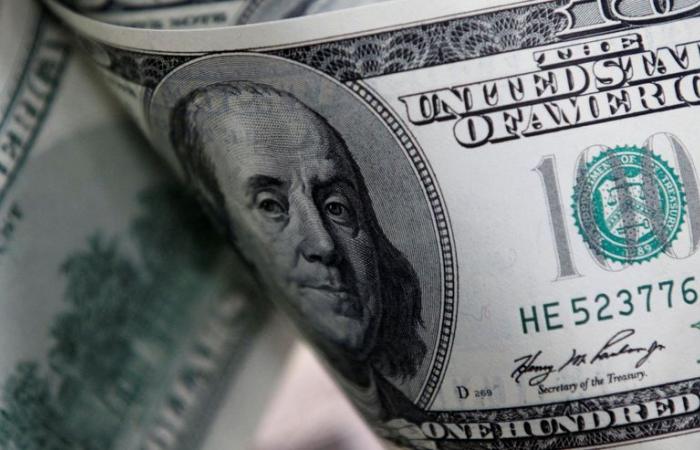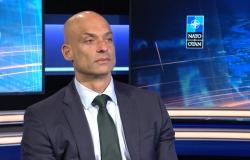Donald Trump’s imminent return to the White House is putting the spotlight on the U.S. dollar, which could have far-reaching consequences for every sector from domestic manufacturers to emerging markets if the currency’s rise continues.
On Wednesday, the American currency recorded its biggest one-day rise against its peers in eight years, the day after Mr. Trump’s re-election as president and the Republicans’ victory in the Senate and the House of Representatives. The dollar is up 3.8% this year and is at its highest level in four months.
How much the dollar rises could depend on whether investors believe Mr. Trump will implement the tax cuts and tariffs that are key parts of his economic agenda. While these policies can boost growth, they risk accelerating inflation and keeping U.S. interest rates well above those of other countries. Higher rates increase the dollar’s attractiveness to investors.
At the same time, a strong dollar could hurt U.S. businesses — one reason why the president-elect regularly railed against the rising dollar during his first term.
“A Trump administration likely means more spending, a hotter economy and high bars for international trade – all things that mean strength for the dollar,” said Helen Given, associate director of trading at Monex USA.
TRAJECTORY OF RATES
The path of interest rates is decisive for the future prospects of the dollar. The Federal Reserve kicked off its latest round of monetary easing by cutting the rate by 50 basis points in September and is expected to announce a 25 basis point cut at the end of this week’s two-day monetary policy meeting on Thursday .
Expectations of rate cuts helped weaken the dollar at the start of the year.
But the prospect of higher inflation could encourage policymakers not to overheat the economy by cutting rates too sharply. Traders on Wednesday reduced bets that the Fed will cut rates next year to about 42 basis points, from 62 basis points last month, according to LSEG calculations.
“I would say this is a tectonic shift in the currency markets,” said Paresh Upadhyaya, director of fixed income and currency strategy at Amundi US. Investors must now “consider the tariffs and the implications they will have on the U.S. inflation outlook, the global growth outlook, and… how the Fed will respond to these tariffs.” .
A so-called “Red Sweep” scenario, in which Republicans control the White House and both houses of Congress, could make it easier for Donald Trump to enact tax cuts and give Republicans more room to maneuver. their economic program.
While Republicans are expected to hold a majority of at least 52-48 in the U.S. Senate, final control of the lower chamber is not yet clear with vote counting still underway.
Brad Bechtel, global head of foreign exchange at Jefferies, estimates that the dollar could gain another 5% in a “Red Sweep” scenario and advance further in the coming months as Mr. Trump’s agenda is implemented. artwork.
Mr. Trump’s inauguration will take place on January 20.
In 2016, the dollar rose about 6% against a basket of currencies in the first two months after Mr. Trump’s election, but it lost those gains in the following months. The dollar then recovered by about 13% between February 2018 and February 2020, when Mr. Trump implemented tariffs against several countries, including China and Mexico.
RIPPLE EFFECTS
A rising dollar could be a double-edged sword for the U.S. economy, helping to curb inflation while hurting the competitiveness of U.S. products abroad. It could also weigh on the profits of American multinationals which must convert their profits made abroad into dollars.
According to a JPMorgan study, every 2% increase in the trade-weighted dollar reduces earnings growth in the S&P 500 by 1%.
If the rising dollar becomes a drag on growth, Mr. Trump could urge the Fed to cut interest rates or push the United States’ trading partners to strengthen their own currencies.
It could also use the Exchange Stabilization Fund, created in the 1930s to stabilize exchange rates and now worth about $215 billion. Mr. Trump did not use the fund during his first term and analysts doubt the effectiveness of such a measure in containing the dollar without a global effort or support from the Fed.
“Mr. Trump’s preference for a weaker dollar should be considered by and in coordination with the Federal Reserve, which we believe is unlikely,” Wells Fargo analysts wrote in a report released Wednesday.
Given the dollar’s role as the linchpin of the global financial system, continued strength in the U.S. currency could spill over to other assets.
A strong dollar could be particularly unwelcome among emerging countries, particularly those that have borrowed heavily in the American currency, because a rise in the dollar would make it more difficult to repay their debts.
That could prompt central banks in those countries, as well as those in some developed countries like Japan, to raise rates to defend their own currencies, said Mr. Bechtel of Jefferies.
“You are going to enter into this new regime of currency wars that were triggered from time to time in the past,” he said.
Some investors believe the tariffs could ultimately harm the U.S. economy because they can increase costs for businesses and consumers, disrupt supply chains and reduce trade volumes. All this could reduce the prospects of a strengthening dollar in the future.
According to a Deutsche Bank study, the tariffs would reduce U.S. gross domestic product by about a quarter of a point if implemented.
“The reality is that an all-out protectionist agenda will ultimately impact the U.S. economy and slow growth,” said Karl Schamotta, chief strategist at payments company Corpay.






